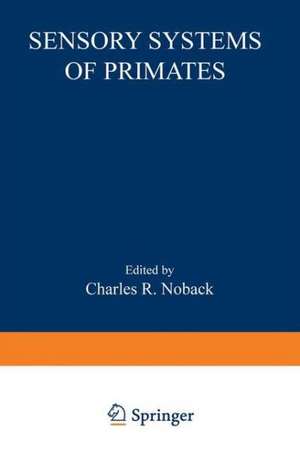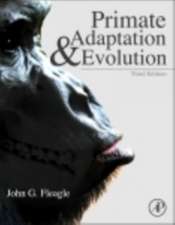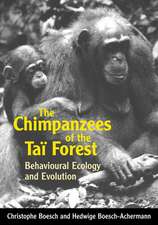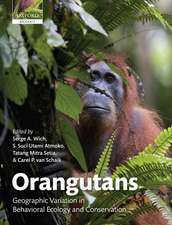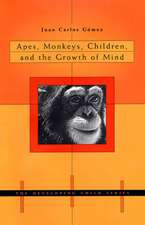Sensory Systems of Primates: Advances in Primatology
Editat de Charles Nobacken Limba Engleză Paperback – 17 iun 2012
Preț: 636.30 lei
Preț vechi: 748.59 lei
-15% Nou
Puncte Express: 954
Preț estimativ în valută:
121.77€ • 126.66$ • 100.53£
121.77€ • 126.66$ • 100.53£
Carte tipărită la comandă
Livrare economică 15-29 aprilie
Preluare comenzi: 021 569.72.76
Specificații
ISBN-13: 9781468424867
ISBN-10: 1468424866
Pagini: 224
Ilustrații: XIV, 208 p. 27 illus.
Dimensiuni: 152 x 229 x 12 mm
Greutate: 0.3 kg
Ediția:Softcover reprint of the original 1st ed. 1978
Editura: Springer Us
Colecția Springer
Seria Advances in Primatology
Locul publicării:New York, NY, United States
ISBN-10: 1468424866
Pagini: 224
Ilustrații: XIV, 208 p. 27 illus.
Dimensiuni: 152 x 229 x 12 mm
Greutate: 0.3 kg
Ediția:Softcover reprint of the original 1st ed. 1978
Editura: Springer Us
Colecția Springer
Seria Advances in Primatology
Locul publicării:New York, NY, United States
Public țintă
ResearchCuprins
1. Structural Organization and Communicatory Functions of Olfaction in Nonhuman Primates.- I. Introduction.- II. Structural Organization.- III. Communicatory Functions of Olfactory Signals.- IV. References.- 2. Physical and Physiological Principles Controlling Auditory Sensitivity in Primates.- I. Introduction.- II. The Ear as an Early Warning Device.- III. Sensitivity of Detection.- IV. Directional Reception of Sound.- V. Brownian Noise.- VI. Improvement in Sensitivity of Detection by Reduction of Noise.- VII. The Effect of Narrow-Band Filters on Brownian Noise.- VIII. Detection of Signals.- IX. Multiple Sources of Noise.- X. Concluding Remarks.- XI. References.- 3. The Anatomical Organization of the Primate Auditory Pathways.- I. Introduction.- II. Morphological Aspects of the Auditory Pathway.- III. The Course and Distribution of Primary Auditory Fibers.- IV. Ascending Fiber Systems in the Central Nervous System.- V. Other Connections.- VI. References.- 4. Vocal Communication in Primates.- I. Introduction.- II. The Auditory Signal.- III. Perception of Vocalizations.- IV. Conclusions and Summary.- V. References.- 5. Structural and Functional Aspects of the Superior Colliculus in Primates.- I. Introduction.- II. Anatomical Studies.- III. Physiological Studies.- IV. Behavioral Studies.- V. Summary and Conclusion.- VI. References.- 6. Parallel Pathways Connecting the Primate Superior Colliculus with the Posterior Vermis: An Experimental Study Using Autoradiographic and Horseradish Peroxidase Tracing Methods.- I. Introduction.- II. Materials and Methods.- III. Results.- IV. Discussion.- V. References.- 7. The Organization of Visual Cortex in Primates.- I. Introduction.- II. The Visual Areas.- III. Connections.- IV. The Significance of Multiple Representations.- V. References.- 8. The Relevance of Endocasts for Studying Primate Brain Evolution.- I. Introduction.- II. Possible Lines of Evidence for Brain Evolution.- III. Qualitative and Quantitative Descriptions.- IV. Toward Fuller Morphometric Analyses.- V. Addendum.- VI. References.
